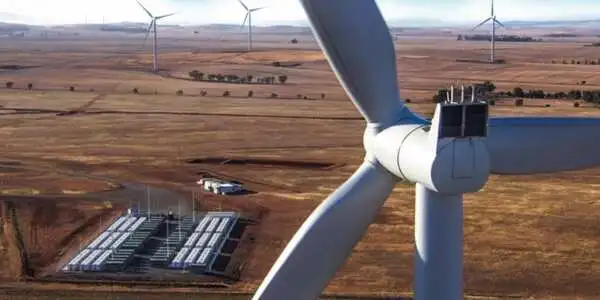When electric grids fail, there is no way to restart them – to ‘blackstart’ them – with wind turbine power. A team is currently working to develop strategies and controllers to reenergize wind-dominated power grids. Wind turbines now generate 55 percent of the electricity in Iowa.
When the power grid fails, there is a step-by-step recovery procedure known as a “blackstart,” which has previously relied on power from gas or hydro turbines spinning inside a power plant. Everything was under control. Start the turbines, spin the generators, and watch the electrons flow steadily and predictably to reenergize the grid and withstand short circuits and other faults.
But what if we’re discussing a wind farm? One that stretches across the landscape. One that is less consistent and predictable. One that is affected by the direction of the wind. What happens when a wind-dominated grid fails? How do engineers create a wind farm with hundreds of individual power generators collaborating to restore power to homes and businesses?
According to an October 2019 headline and paper in the journal Science, this is one of three major “Grand challenges in the science of wind energy.” (The lead author is Paul Veers of the National Renewable Energy Laboratory in Colorado.)
Our contributions are significant in meeting standards for restoration, reliability, and interoperability. It is also critical not to jeopardize restoration processes, cause economic losses, or endanger lives, such as when electricity is critical for heating in cold weather.
Hugo Villegas Pico
Hugo Villegas Pico, an Iowa State University Harpole-Pentair assistant professor of electrical and computer engineering, saw the paper and thought he could engineer solutions for grand challenge three, “optimization and control of fleets of wind plants comprising hundreds of individual generators working synergistically within the larger electric grid system.”
The US Department of Energy’s Office of Basic Energy Sciences awarded him and his research group a three-year, $729,349 grant in 2020 to figure out how to orchestrate the restoration of wind-dominant electric grids following a blackout.
Villegas Pico and Vahan Gevorgian, a chief engineer at the National Renewable Energy Laboratory, describe the development of grid-forming controllers and a stall-prevention subsystem that enables certain wind turbines to blackstart a power grid in a research paper accepted for publication in IEEE Transactions on Energy Conversion and recently published online.
It’s an important step toward increasing wind farms’ resilience to blackouts.
“If wind power plants are unable to restore a power system, the incorporation of wind resources into electric grids may be limited by blackstart capability,” the researchers wrote in their paper. With 11,660 megawatts of installed capacity (and 437 more under construction), Iowa generates 55 percent of its electricity from wind.
So, what would it take to use them to restart a grid after a blackout?

Villegas Pico says the first challenge for “Type 4” turbines, which feature fully-rated electronics converters to transfer all their generating capacity to the grid, was engineering a grid-forming control strategy that allows turbines to operate on the grid independently of any gas or hydro turbines, which is not currently possible.
“The control strategy is a software algorithm,” Villegas Pico said. “It steers the operation of wind turbines so they’re capable of reliably restoring power systems.”
The software specifically assists the turbines in cooperating and withstanding asymmetrical grid faults such as those caused by trees that take down and short-circuit parts of the transmission and distribution grid.
The second challenge was to create an active protection system that would prevent wind turbines from stalling – stopping – during the recovery from a blackout if power demand exceeded available wind. The researchers demonstrated through detailed simulations that their new control systems can reenergize a wind-dominant power grid, ride through asymmetrical faults, and survive low-speed winds by plugging their ideas into a computer model.
In places like Iowa, where wind farms are proliferating, Villegas Pico believes that using wind power to restore power grids could speed up the process. There are simply too many turbines to choose from these days.
According to Villegas Pico, the research team is also applying these advancements to other types of wind turbines as well as power systems that use batteries to store energy. In addition, the project is developing artificial intelligence and weather forecasting tools to assist operators in orchestrating the restoration of wind-dominant grids. According to Villegas Pico, the new advances could be used in wind power plants within a few years, benefiting utilities and their customers.
“Our contributions are significant in meeting standards for restoration, reliability, and interoperability,” the researchers wrote. “It is also critical not to jeopardize restoration processes, cause economic losses, or endanger lives, such as when electricity is critical for heating in cold weather.”





